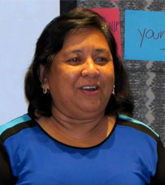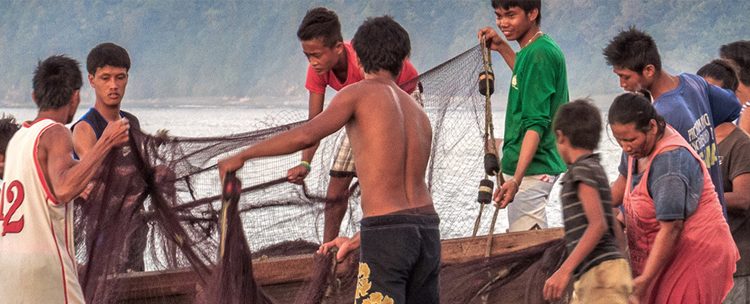
On November 8, 2013 one the most intense storms in history struck the Philippines. In less than 24 hours typhoon Haiyan claimed over 7,300 lives and destroyed roads, buildings, agricultural fields and fisheries, causing US$10 billion of economic damages.
Because of their geography and their location within the “Pacific Ring of Fire”, the Philippines is prone to multiple natural hazards – storms, earthquakes, and volcanic eruptions – alongside human-induced hazards. “The question is not if another powerful hazard event will hit the Philippines, The question is: when? And will we be ready?” says Jessica Dator-Bercilla, Science-Policy Research Specialist at the Manila Observatory, former fellow and current mentor with the START’s Pan-Asian Risk Reduction (PARR) fellowship program.
With her colleagues at the Manila Observatory, Jessica engages the Department of Interior and Local Government (DILG) on disaster risk preparedness. “When Haiyan struck in 2013, the weakness in the Philippines’ response to disaster risks became more obvious. Other countries facing similar hazards has far less disaster losses and damages. The Philippines needed to learn about dealing with disaster risks” explains Jessica.
Just a few months later, the opportunity to work closely with experts and institutions in the region came up as a START Pan-Asian Risk Reduction (PARR) fellowship. As a PARR fellow, Jessica traveled to Taiwan’s National Science and Technology Center for Disaster Reduction (NCDR). While learning about Taiwan’s cutting edge risk reduction strategies and laws, she was struck by their integrated risk assessment platform. This mechanism ensures that multiple stakeholders contribute to identifying hazards, exposures and vulnerabilities, making risk assessment efforts more evidence- and science-based, inclusive and responsive. Back to the Philippines, she and colleagues in the Manila Observatory had the opportunity to explain the value of an integrated risk assessment platform before the DILG and the National Disaster Risk Reduction and Management Council (NDRRMC). The platform is now an essential part of the Philippines’ National Disaster Preparedness Plan.
“One of the greatest benefits of the PARR program is the opportunity to meet and learn from regional and international experts,” says Jessica. “Institutional collaborations are also continuing beyond the program. The DILG, the National Disaster Risk Reduction and Management Council of the Philippines, the Manila Observatory, and Taiwan’s NCDR for example, are actively engaging through channels that are facilitated by the PARR network of experts and fellows.”
“Traditional fellowships help scientists advance their career, but for the Manila Observatory, the PARR program goes beyond that. We want to make sure that the skills and knowledge we develop and exchange through this program contribute to nation-building,” adds Jessica. “The fellowship has provided us with opportunities to enhance knowledge and technical capacities to engage the government and other stakeholders in developing better risk reduction and resilience approaches and strategies for the Philippines.”



